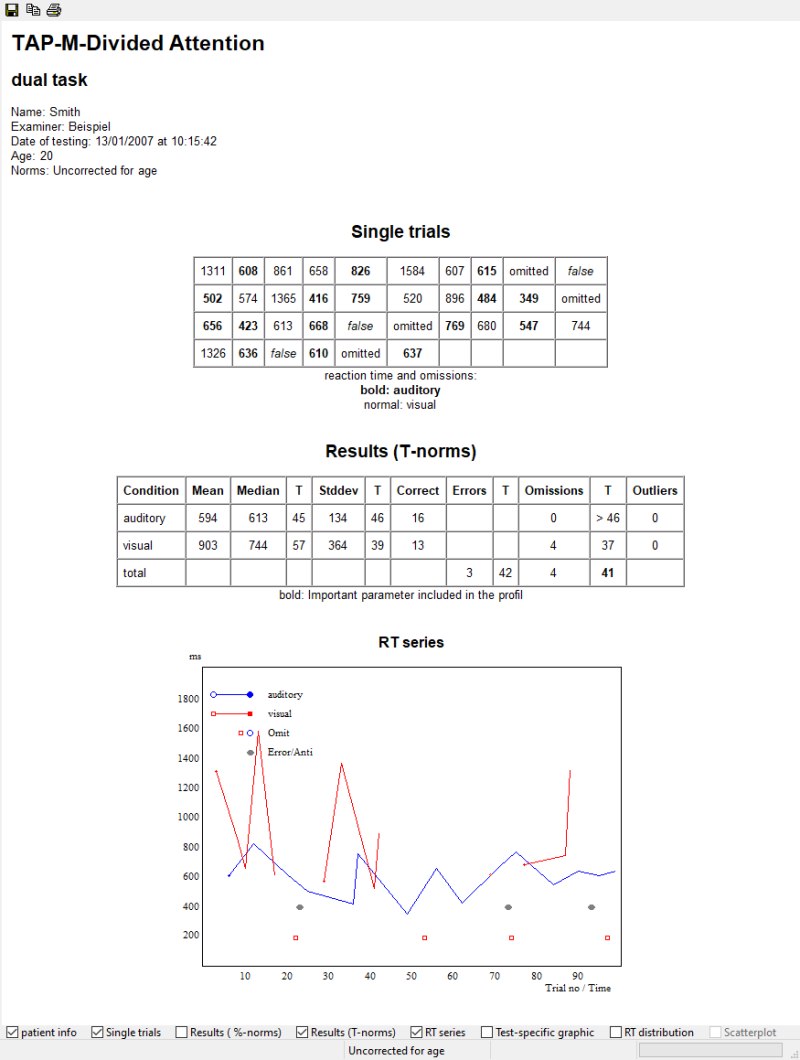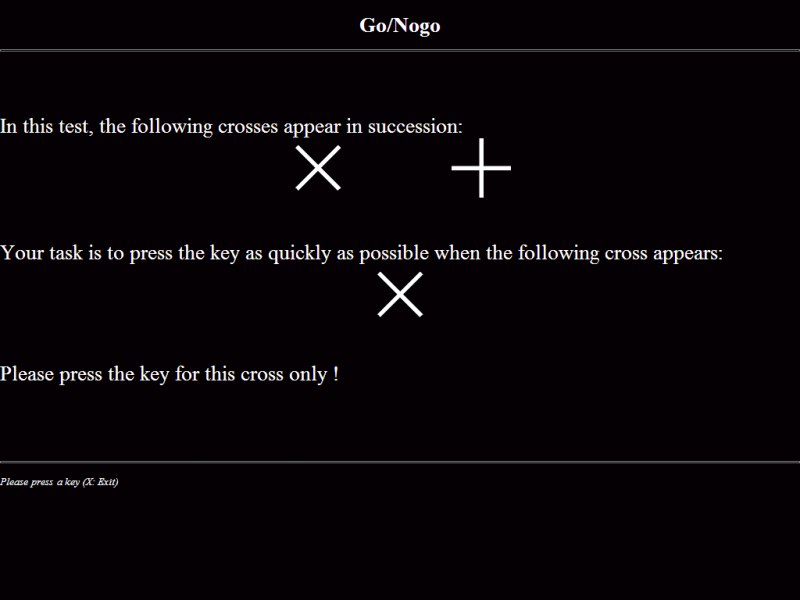Alertness is the general state of wakefulness that allows a person to react quickly and appropriately to concrete demands. It is the prerequisite for adequate action and represents the basis of every attentional performance - in this respect, alertness is of central importance for participation in road traffic.
This test is designed to assess tonic alertness, which is defined as the ability to maintain a high level of responsiveness in anticipation of a test stimulus. The alertness test measures the simple reaction time in response to a visual stimulus (a cross presented on the monitor).

























